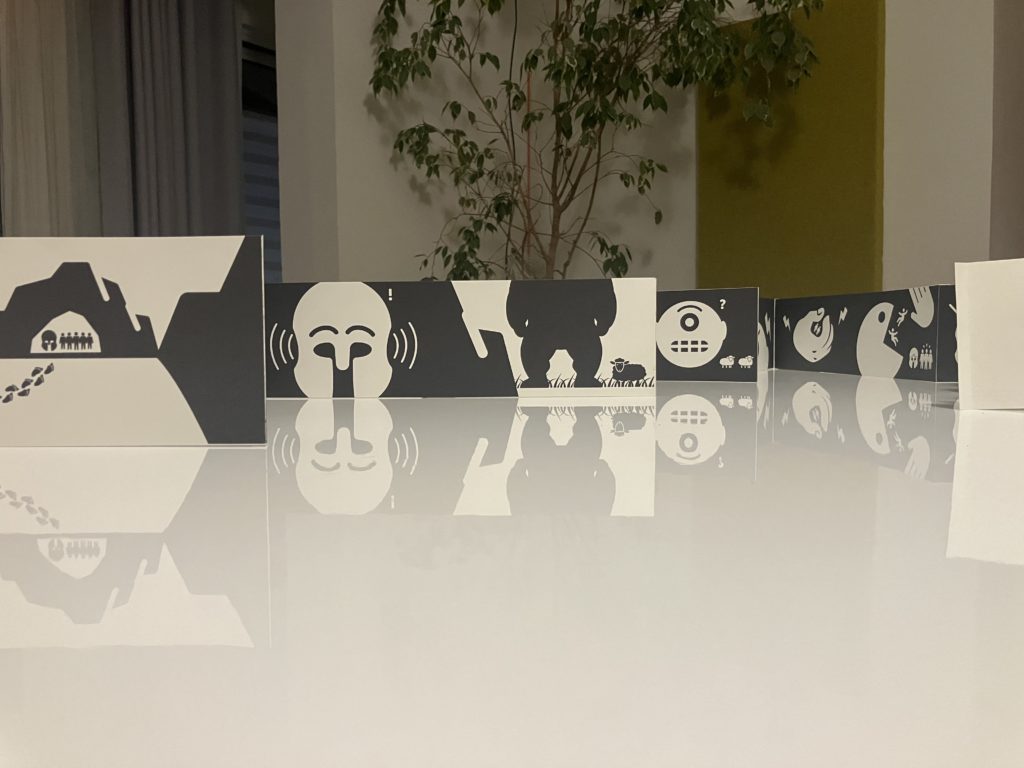Augmentative and Alternative Communication is a fantastic tool for fostering inclusion and enabling everyone to communicate effectively. Whether it is with learners of a new language, non-verbal students with autism spectrum disorder, or deaf and hard-of-hearing students, AAC can offer concrete and tailored solutions. Here are some of the highlights of the two years of working with AAC for the Plural Words partners:
Pictodyssée
Les Apprimeurs, our French partners, had the opportunity to collaborate with the PIA (speakers of a foreign language integration program) at the Lycée Aristide Briand in Saint-Nazaire. Their visit aimed to test “Pictodyssée,” a storytelling workshop designed for participants who face challenges in reading, expressing themselves, or accessing the French language. The workshop combines visual storytelling and pictograms to make classic narratives accessible to all. This article highlights a promising example of how AAC-based tools can empower non-native speakers to engage with literature and language creatively and collaboratively.
Using a 15-meter-long leporello (accordion book) filled with continuous black-and-white illustrations and a companion booklet with pictograms, students worked in groups to interpret and retell parts of the story.
The exercise sparked curiosity, collaboration, and engagement, as students navigated the visual narrative and constructed their own versions of the tale, without relying heavily on translation tools. The workshop not only fostered language development but also encouraged storytelling autonomy.

This successful pilot highlights the potential of AAC-based storytelling methods to promote inclusion, creativity, and confidence in language learners and paves the way for multilingual reinterpretations and exchanges in future iterations.
AAC and Autism: Supporting Communication and Independence
At Josip Matoš Primary School in Croatia, special education teacher Lora Jukić integrates AAC tools daily to support students with autism spectrum disorder (ASD). Devices such as talking buttons, GoTalk boards, and visual-audio schedules provide students with functional ways to express needs, make choices, and participate in classroom routines.
Outdoor Big Point devices enable children to actively participate in learning content, particularly when the entire group of students struggles with language expression, or when all students are non-verbal. For example, a student can activate a recorded message or participate in answering questions by simply pressing a switch (I want, I don’t want, yes – no, communicate their basic physiological needs, etc.). This form of interaction increases motivation, engagement and a sense of success in students.

When the devices are first introduced, a student uses talking buttons to express basic needs (‘I am thirsty’, ‘I am hungry’, ‘I am going out’). By gradually introducing additional messages, the student can adopt a simple sentence structure (‘I + verb + noun’), which significantly improves functional communication and reduces the number of frustrating behaviours caused by the inability to express oneself.

When the devices are first introduced, a student uses talking buttons to express basic needs (‘I am thirsty’, ‘I am hungry’, ‘I am going out’). By gradually introducing additional messages, the student can adopt a simple sentence structure (‘I + verb + noun’), which significantly improves functional communication and reduces the number of frustrating behaviours caused by the inability to express oneself.
Structured visual-audio schedules also help students transition between activities with less anxiety, while interactive tools like Big Point devices and GoTalk boards encourage group participation. “Each child had the opportunity to press the appropriate button to ‘say’ what day it was,” she says, describing the morning circle routine.
Whether using AAC to prepare breakfast step-by-step or join in group activities like holiday greetings, students gain not only communication tools, but also confidence, independence, and a stronger sense of belonging. This example shows how AAC can transform classroom participation and inclusion for learners with ASD.
Writing with Symbols: Supporting Literacy with SymWriter
At the Special Technological High School for the Hearing Impaired in Cluj-Napoca, Romania, SymWriter is a key AAC tool used to support students with hearing and associated disabilities. This software allows learners to “write with symbols,” making language, reading, and writing more accessible and engaging.

Often, at the onset of auditory-verbal therapy, children with hearing and associated disabilities show major delays in the development of verbal language and communication in general. SymWriter can be used as an AAC resource to stimulate verbal language development.
Teachers use SymWriter to create personalised, symbol-supported materials, from word lists and labels to full narratives, adapted to each student’s level. “The child, guided by the teacher, can transcribe the whole story word by word in an accessible, attractive and effective way,” explains the team.
The software also supports reading comprehension with the Widgit, which provides a visual solution for understanding the verbal message. Written expression is supported as well by offering immediate visual feedback: correct spelling generates a symbol, while errors are highlighted in pink. Materials can be exported in PDF and shared digitally, making it easy for families to reinforce learning at home.
By combining storytelling with symbol-based communication, SymWriter empowers students to build confidence, expand their vocabulary, and develop essential literacy skills.
Final thoughts
In conclusion, these diverse experiences across Europe demonstrate the remarkable versatility and impact of AAC tools in inclusive education. From fostering storytelling and language development in multilingual settings, to supporting autonomy and communication for students with autism or hearing impairments, AAC empowers learners to connect, express, and thrive. As the Plural Words partners have shown, when communication becomes accessible to all, education becomes truly inclusive, and every voice can be heard.
